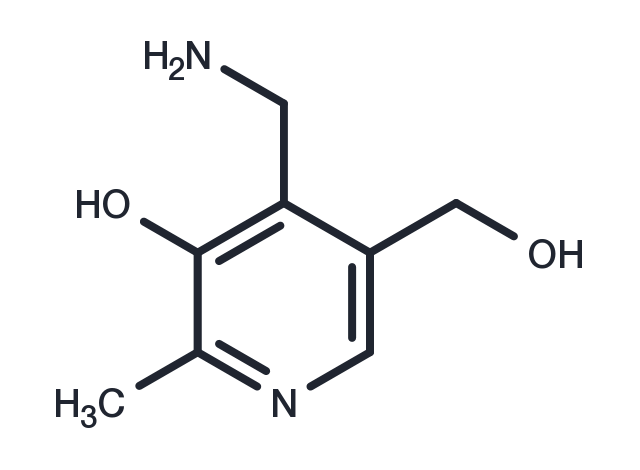Powder: -20°C for 3 years | In solvent: -80°C for 1 year


Pyridoxylamine (pyridoxamine) is an inhibitor of advanced glycation end production (AGEs) and lipoxidation end products (ALEs).

| Pack Size | Availability | Price/USD | Quantity |
|---|---|---|---|
| 10 mg | In stock | $ 38.00 | |
| 25 mg | In stock | $ 61.00 | |
| 50 mg | In stock | $ 89.00 | |
| 100 mg | In stock | $ 128.00 | |
| 1 mL * 10 mM (in DMSO) | In stock | $ 147.00 |


| Description | Pyridoxylamine (pyridoxamine) is an inhibitor of advanced glycation end production (AGEs) and lipoxidation end products (ALEs). |
| In vitro | Pyridoxylamine (PM) is a member of the B6 vitamer family,and is a potent scavenger of reactive carbonyls, inhibiting the late stages of glycation reactions that lead to AGE formation[1]. |
| In vivo | In STZ diabetic rats, Pyridoxylamine inhibited the formation of CML and CEL and the cross-linking of skin collagen, ultimately inhibiting the development of nephropathy. Pyridoxamine does not appear to act as an antioxidant because it does not inhibit lipid peroxidation. However, it prevents modification of proteins by lipid peroxidation products, including inhibition of the formation of adducts of malondialdehyde and 4-hydroxynonenal on proteins in Zucker rats [1]. |
| Synonyms | pyridoxamine |
| Molecular Weight | 168.19 |
| Formula | C8H12N2O2 |
| CAS No. | 85-87-0 |
Powder: -20°C for 3 years | In solvent: -80°C for 1 year
DMSO: 31.25 mg/mL (185.80 mM), Sonication is recommended.
H2O: 6.25 mg/mL (37.16 mM), Sonication is recommended.
You can also refer to dose conversion for different animals. More
bottom
Please see Inhibitor Handling Instructions for more frequently ask questions. Topics include: how to prepare stock solutions, how to store products, and cautions on cell-based assays & animal experiments, etc.
Pyridoxylamine 85-87-0 Metabolism Endogenous Metabolite pyridoxamine inhibit Inhibitor inhibitor
